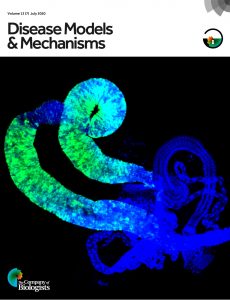Updated 18 October 2023
The scholarly communication landscape has changed profoundly over the past two decades, with a profusion of new publishing and subscription models from commercial and not-for-profit publishers. The increasing importance of Open Access (OA) – making research immediately and freely available to all – has presented challenges as well as opportunities for libraries, funding organisations, publishers and researchers alike.
Some fields within the biological and biomedical sciences have welcomed OA publishing for many years, while others have approached it more slowly. Similarly, OA is essential for an increasing number of authors because their funder or institution mandates some form of OA, while for others it is less of a consideration. One thing is certain however – OA will continue to play an important role in the future of publishing.
How we support OA
We are a not-for-profit organisation dedicated to supporting and inspiring the biological community worldwide. We have been committed to OA publishing since 2004 as we believe it benefits science through wider and faster dissemination, higher readership and an acceleration in the sharing of quality research.
Over the past four years in particular, we have taken big steps to increase the proportion of OA content in our journals and to ensure that the transition towards OA is smooth, transparent, affordable and sustainable for all.
We are supporting OA in the following ways:
- High quality Open Access publishing
- Read & Publish agreements with libraries and library consortia
- Our commitment to the Transformative Journal approach
High quality Open Access publishing
In 2004, we evolved our subscription journals – Development, Journal of Cell Science and Journal of Experimental Biology – into hybrid journals. This enabled us to maintain subscription revenue at a time when OA as a business model was unsustainable, because publication costs far exceeded income from article processing charges (APCs).

 The hybrid model – where authors have the option of publishing their articles Green OA (free to read after six months) or Gold OA (free to read immediately) – was our first step towards exploring the publication of our journals as fully OA. Fast forward seven years and, in 2011, we launched Biology Open, our first born-OA journal. Disease Models & Mechanisms also made the switch to become fully OA that same year.
The hybrid model – where authors have the option of publishing their articles Green OA (free to read after six months) or Gold OA (free to read immediately) – was our first step towards exploring the publication of our journals as fully OA. Fast forward seven years and, in 2011, we launched Biology Open, our first born-OA journal. Disease Models & Mechanisms also made the switch to become fully OA that same year.
We apply the same high standards to all articles, whether OA or not. And, as OA continues to evolve, our journals will remain a source of reliable, quality research in the life sciences.
Read & Publish agreements with libraries and library consortia
Navigating the transition to fully OA publishing has not been straightforward. There are ongoing discussions about the best mechanisms to promote OA fairly, as not every researcher has access to funds to cover APCs. At the same time, scholarly publishers need to maintain financial stability, in order to keep being able to offer their services to the community of researchers.
In November 2019 – following extensive consultation and collaboration with libraries, funding organisations and other publishers – we were one of the first not-for-profit publishers to launch a cost-neutral Read & Publish (R&P) OA initiative, which supports institutions and authors working to meet funding requirements and to make OA the default publishing choice.
From the start, we chose to offer:
- unlimited “read” access to our three subscription journals – Development, Journal of Cell Science and Journal of Experimental Biology – and their archives dating back to 1853
- uncapped, immediate and fee-free Open Access publishing of research articles for corresponding authors
Since January 2022, libraries have been able to choose to include fee-free publishing in our two fully Open Access journals – Disease Models & Mechanisms and Biology Open – in their Read & Publish agreement.
We are delighted with the success of the Read & Publish initiative. As at October 2023, over 650 institutions in 41 countries are participating and we have had very positive feedback from librarians, library consortia and authors.
We have signed R&P agreements with the following library consortia – Bibsam Consortium (Sweden), CAUL (Australia), CSIC (Spain), IReL (Ireland), IISER (India), Jisc (UK), JULAK (Hong Kong), MALMAD (Israel) and the National Institutes of Health (USA) – as well as with individual institutions.
We are also piloting variations of our standard Read & Publish model with the Max Planck Digital Library and the University of California.
In addition, we have signed a landmark agreement with Electronic Information for Libraries (EIFL) which enables researchers in 30 developing and transition economy countries to publish Open Access research articles in our subscription journals without charge.
R&P agreements have already led to a significant increase in accepted OA articles, and articles published as a result of R&P agreements in 2022 represented 71% of the total number of OA articles across our three subscription journals.
Commitment to the Transformative Journal approach
The excellent response to the launch of our R&P initiative gave us the confidence to commit to the ‘transformative’ route towards Open Access, and our three hybrid journals were the first journals to be afforded Transformative Journal status by Plan S.
The Transformative Journal strategy signals our commitment to move towards full OA, while allowing us to provide publishing options that support all our authors as we approach this change in the publishing landscape.
Development, Journal of Cell Science and Journal of Experimental Biology – as Transformative Journals – will continue to offer three publication choices – free non-OA publishing, Gold OA (author pays), and APC-free OA publishing through R&P agreements. This means that researchers can continue to publish with us regardless of their funder or financial status.
“I am delighted that The Company of Biologists is fully committed to transitioning its journals to full Open Access – as evidenced by the Read and Publish arrangements developed last year and the announcement that their three subscription journals will become Transformative Journals, from January 2021,” said Robert Kiley (Head of Open Research at The Wellcome Trust in Head of Strategy, cOAlition S) in 2020. “We welcome the commitment to transition to full Open Access, to offset subscription income from payments for publishing services and to work to increase the share of OA content, year-on-year. I hope other journals follow the lead set by The Company of Biologists.”
All Transformative Journals have annual Open Access growth targets and we are delighted that our targets for all three journals have been met in 2021 and 2022. Find out more about our targets, as well as the benefits of publishing Open Access in our video or on the Transformative Journals page.
We have come a long way since 2004, and our community remains at the heart of our publishing decisions. Whatever the future of publishing may hold, you can rest assured that The Company of Biologists and its journals will remain committed to supporting our authors, reviewers, readers and library partners.
Watch the video below to hear our Editors-in-Chief of Development, Journal of Cell Science and Journal of Experimental Biology giving their thoughts on Open Access publishing.
- The original version of this article was published in October 2021.








You must be logged in to post a comment.